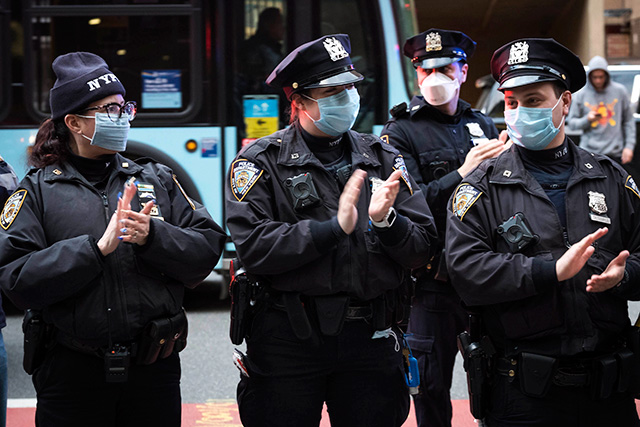
(Ed Reed/Mayoral Photography Office)
By Michael Forte
During the last two weeks of March, crime overall in New York City decreased by 20 percent. These dates coincided with Governor Andrew Cuomo’s lock down of the state. The city saw a 25 percent decrease in murders, a 10 percent decrease in robberies, and a 37 percent decrease in grand larcenies.
Police Commissioner Dermot Shea said the COVID-19 crisis did seem to damper crime. “Dealing with this crisis, as you see crowds disappearing on streets and other areas, that has translated to a decrease in crime,” he said in a press conference on the virus.
In the 45th Precinct, already one of the safest precincts in the Bronx, crime is down in nearly every major category, according to the NYPD. The Compstat report covering the week April 13-19, many categories of crime have significantly decreased compared to this same time period in 2019. There have been zero recorded rapes, compared to three in this time period during 2019. Robberies decreased from eight to four, felony assaults decreased from 22 to 11, and grand larcenies decreased from 34 to 19. Oddly, there was one recorded murder, compared to zero in 2019. Burglaries also increased, from five to eight.
The 45th Precinct covers the Northeast coast of the Bronx, its officers patrol Co-Op City, Pelham Bay, Country Club, Throggs Neck, and City Island neighborhoods. There are more than 100,000 people residing in these neighborhoods.
Co-Op City, the largest cooperative housing development in the world, has over 40,000 residents. The complex has its own private public safety force, the Co-Op City Department of Public Safety, which helps keep crime low. The complex is considered the largest naturally occurring retirement community in the country, with over 8,000 residents being above the age of 60. Those age 65-74 and 75-older are at greater risk for Covid-19.
Melissa Felix, a nurse working 12-hour shifts at a hospital in the Bronx, confirms these statistics. “The bulk of people I’m treating are elderly, it’s really sad and scary all around,” says Melissa Felix, a nurse working 12-hour shifts at a hospital in the Bronx, echoes these statistics. “I’m almost numb to all this already – how am I supposed to save of an 80-year-old woman when the top scientists in the world aren’t even sure how this virus works? Everyone needs to listen to the government and stay home.”
This is particularly relevant for those living in multi-generational homes. The health department data shows that, while the infection and death rates are highest for the elderly, there is three times the number of cases among those 18-64. Even if the elderly remain inside, their younger relations may bring the virus home.
“It’s terrifying,” says Maria Ramos Rodriguez, a senior citizen who lives alone in Co-Op City. “I have to leave my house to go grocery shopping. I get nervous whenever I get near a person, you just don’t know who can be infected.”
To limit contact and stop the spread, public parks have been closed, athletic fields have been locked and nets taken down. Chris Popovic, a 19-year-old, a resident of the Pelham Bay neighborhood, vented his frustrations. “I was excited to get out to the park and start training again in the nice weather,” says Popovic. “I know this all to better be safe than sorry, it’s just an overall bad situation. I haven’t seen extended family who lives 15 minutes away in two weeks!”


